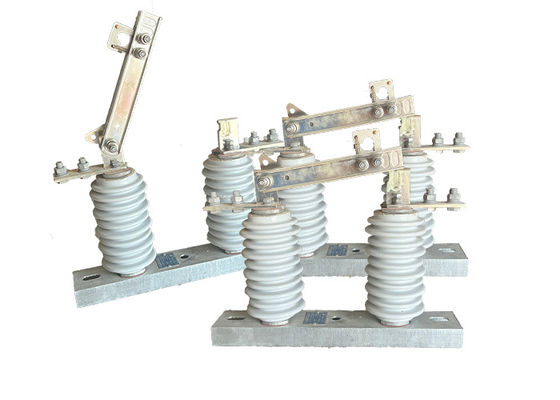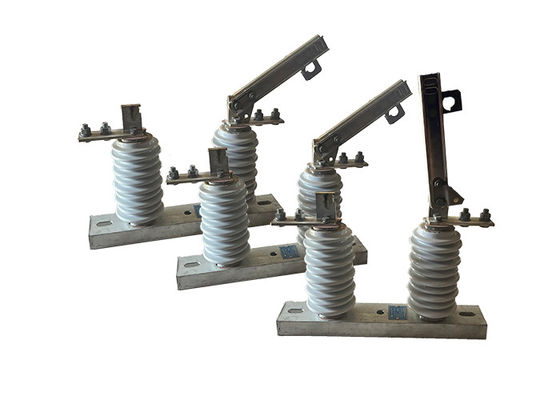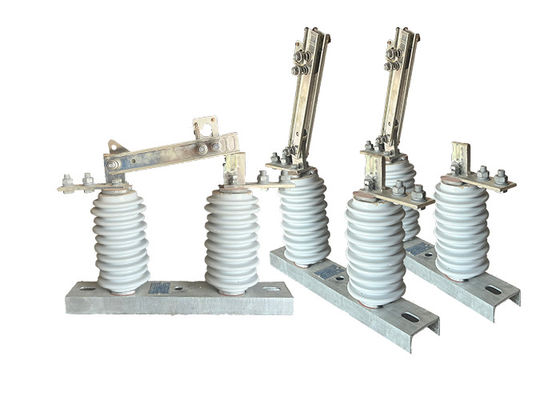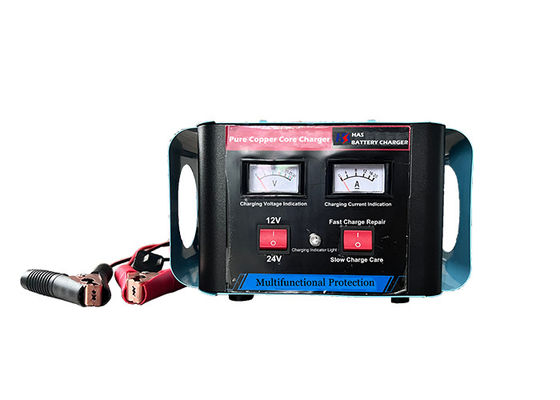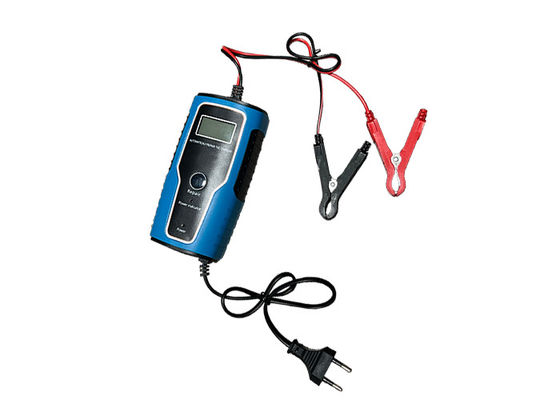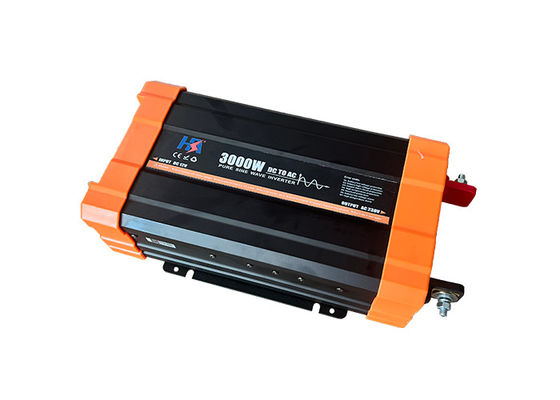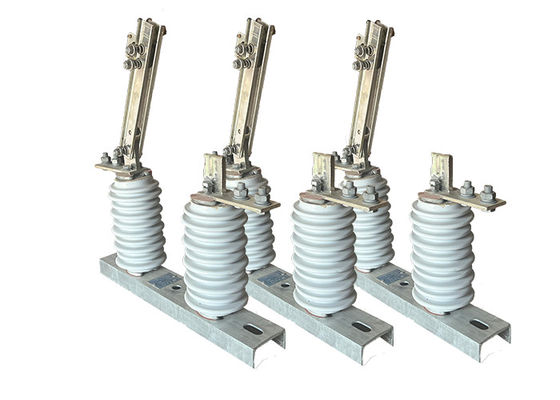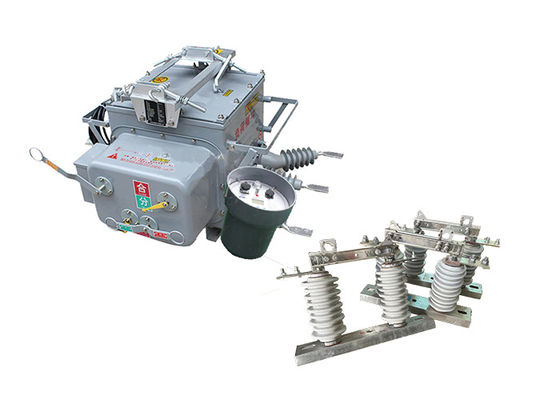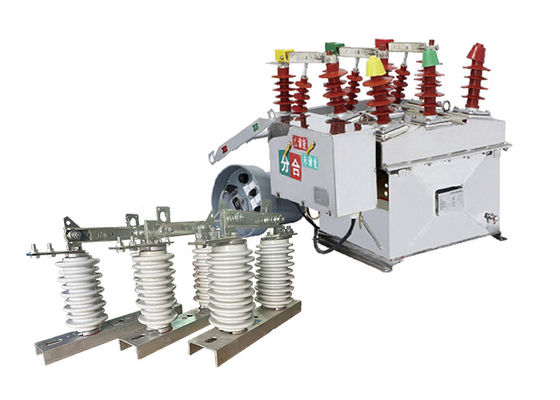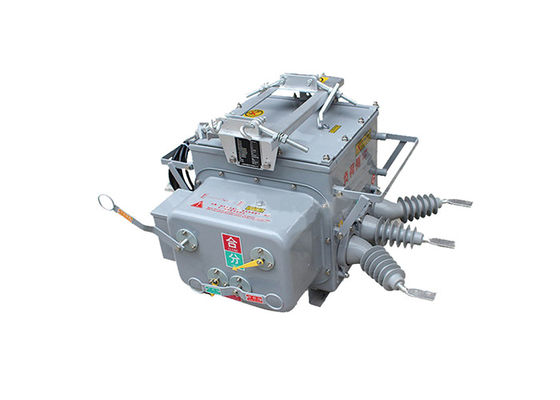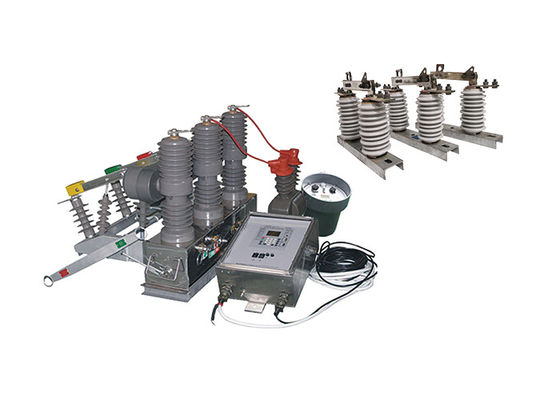Single Phase AC Power Disconnect Switch 1250A 50Hz High Voltage Isolator Switch For Power Transmission Substation
Product Description:
High voltage isolator switches are indeed used in high-voltage power transmission and distribution systems to disconnect circuits from their power sources for maintenance or repair purposes. They provide a means for isolating the circuit from the power supply, allowing workers to safely perform their tasks without the risk of electric shock.
The operation of a high voltage isolator switch involves a rotating pole that controls the opening and closing of the switch's blade or contact. By rotating the pole, the blade can be engaged or disengaged, thereby connecting or disconnecting the circuit. This mechanism allows for a manual and visible indication of the switch's status.
To ensure operator safety, the pole of the high voltage isolator switch is typically made of a non-conductive material, such as fiberglass or composite materials, which provides insulation against the high voltage present in the system. This insulation protects the operator from electric shock when operating the switch.
High voltage isolator switches are available in various designs and sizes to accommodate different voltage and current ratings of the circuits they control. They are commonly mounted on poles or structures in outdoor settings, where they can be easily accessed and operated. In conjunction with other protective devices like circuit breakers and fuses, disconnector switches contribute to the overall safety and reliability of the electrical system by providing a means of isolation and protection
Operation:
1.Initial Position: The disconnector switch is initially in the closed position, meaning the circuit is connected and energized. The switch's blade or contact is in contact with the corresponding terminals or conductors, allowing the flow of electrical current.
2.Preparation and Safety Measures: Before operating the switch, proper safety measures should be taken, such as wearing appropriate personal protective equipment (PPE) and ensuring the area is clear of any potential hazards. It is essential to follow established safety protocols and guidelines.
3.Manual Operation: The operator rotates the switch's pole or handle, which controls the opening and closing of the switch's blade or contact. The pole is typically located at a safe distance from the live electrical components and is made of a non-conductive material for insulation.
4.Opening the Switch: By rotating the pole, the switch's blade or contact is disengaged from the terminals or conductors, effectively opening the circuit. This action interrupts the flow of electrical current and disconnects the circuit from its power source.
5.Visible Indication: As the switch is operated, it provides a visible indication of its status. The position of the switch's blade or contact can be observed, usually through a transparent enclosure or by using visual indicators, to determine whether the circuit is connected or disconnected.
6.Maintenance or Repair: With the disconnector switch in the open position, maintenance or repair activities can be safely performed on the circuit. Workers can work on the system without the risk of electric shock, as the circuit is isolated from the power source.
7.Closing the Switch: Once the maintenance or repair tasks are completed, and it is safe to restore power to the circuit, the operator rotates the pole in the opposite direction to close the switch. The blade or contact re-engages with the terminals or conductors, reconnecting the circuit to its power source.
8.Verification: After closing the switch, it is important to verify that the circuit has been successfully re-energized and is functioning correctly. This can be done through appropriate testing and monitoring procedures to ensure the system is operating as intended.
Safety Tips:
1.Conduct routine testing and maintenance on the switch to ensure its proper functioning. This includes testing the switch's insulation resistance, verifying the operation of safety interlocks, and checking for any abnormal heating or vibrations.
2.Implement a lockout/tagout procedure before performing maintenance or repair work on the switch. This procedure involves locking and tagging the switch to prevent accidental energization while work is being carried out, providing an additional layer of safety.
3.Provide adequate training to personnel who will be operating or working on the switch. Training should cover proper handling, operation, and maintenance procedures, as well as the potential hazards associated with the switch.
4.Implement a comprehensive safety management system that includes regular safety audits, hazard assessments, and incident reporting. This proactive approach to safety helps identify and address potential risks before they result in accidents or injuries.
5.Ensure proper ventilation and cooling systems are in place for high voltage isolator switches located in enclosed or confined spaces. 6.Adequate ventilation helps dissipate heat and prevents the switch from overheating, which can lead to malfunctions or even fires.
Application:
1.Power Distribution Systems: The switch is commonly employed in power distribution networks to isolate specific sections of the circuit for maintenance, repair, or troubleshooting purposes. It allows technicians to safely work on a particular portion of the system without interrupting power to the entire network.
2.Substations: High voltage disconnect switches are commonly used in electrical substations to provide a means of isolating equipment, such as transformers or circuit breakers, from the power source. They facilitate maintenance, repair, or replacement of substation components without affecting the overall power supply.
3.Industrial Facilities: The switch is used in industrial settings where single-phase high voltage circuits are present. It allows for the safe disconnection of equipment or machinery during maintenance or repair activities, ensuring the safety of personnel and protecting the equipment from damage.
4.Renewable Energy Systems: In renewable energy installations, such as solar or wind power systems, high voltage disconnect switches are used to isolate specific sections of the system for maintenance or repair work. They provide a safe way to disconnect the power source from components like inverters, batteries, or grid connection points.
5.Testing and Measurement: The high voltage disconnect switch is often utilized in testing and measurement applications. It allows for the isolation of specific sections of a circuit to perform accurate measurements, analysis, or diagnostic tests without interference from other connected components.
Condition:
1.The altitude does not exceed 1000m
2.The ambient air temperature: Maximum+ 40'C ;Minimum:General Area -30'C, Paramos -40 C;
3.The wind pressure does not exceed 700Pa.(corresponding to 34m/s wind speed);
4.The earthquake intensity does not exceed 8 degrees;
5.The working situation is without frequent violent vibration;
6.The installation site of ordinary type isolator should be kept away form gas, smoke chemical deposition, salt-spray fog, dust
and other explosive and corrosive maters that affect seriously insulation and conduction capability of the isolator
7.Pollution-proof type isolator is applies to severe filthy conduction area, however, it shouldn't be any explosive matters and matters causing fire
Technical Parameters:
| Serial No. |
Parameter |
Unit |
Data |
| 1 |
Rated Voltage |
kV |
12 |
| 2 |
Rated Current |
Model No. |
(H)GW9-12(W)/630-20 |
A |
630 |
| (H)GW9-12(W)/1000-20 |
1000 |
| (H)GW9-12(W)/1250-31.5 |
1250 |
| 3 |
4s Short-time withstanding current |
Model No. |
(H)GW9-12(W)/630-20 |
kA |
50 |
| (H)GW9-12(W)/1000-20 |
50 |
| (H)GW9-12(W)/1250-31.5 |
80 |
| 4 |
Rated Insulation Level |
Lightning surge withstand voltage(peak) |
Polar-to-Earth
(Positive & Negative) |
kV |
75 |
Interfracture
(Positive & Negative) |
85 |
Industrial frequency withstand voltage
(1 min)
(Effective value) |
Dry Test/Wet Test |
Polar-to-Earth |
42(Dry)
34(Wet) |
| Interfracture |
48(Dry) |
| 48(Dry) |
48(Dry)
40(Wet) |
| 5 |
Main Circuit Resistance |
μ Ω |
630 |
| 1000 |
| 1250 |
| 6 |
Mechanical Life Time |
times |
50 |
| 50 |
| 80 |









 Your message must be between 20-3,000 characters!
Your message must be between 20-3,000 characters! Please check your E-mail!
Please check your E-mail!  Your message must be between 20-3,000 characters!
Your message must be between 20-3,000 characters! Please check your E-mail!
Please check your E-mail! 
